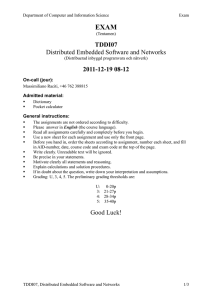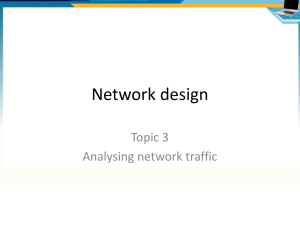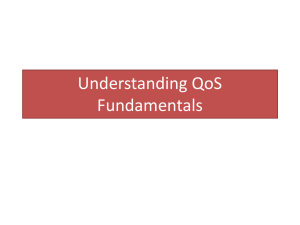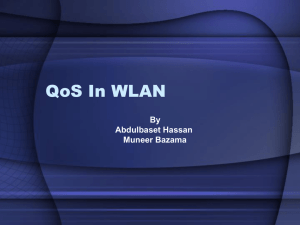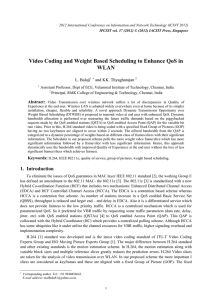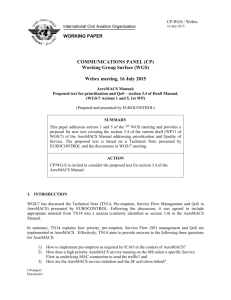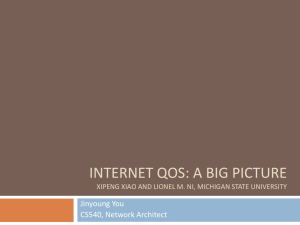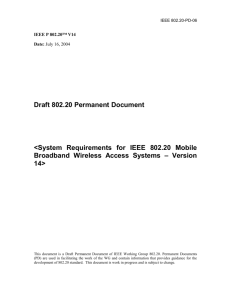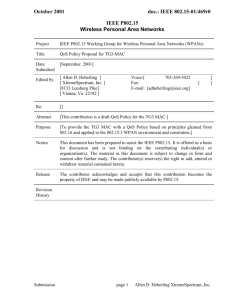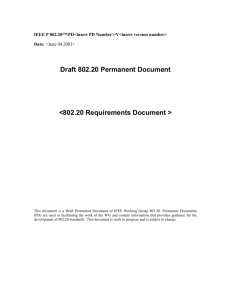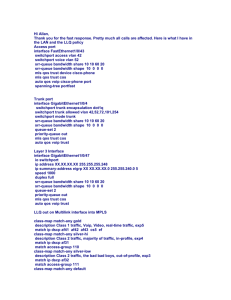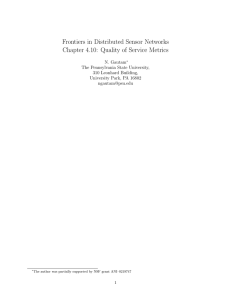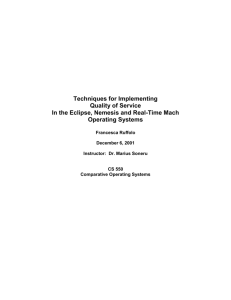Service
advertisement
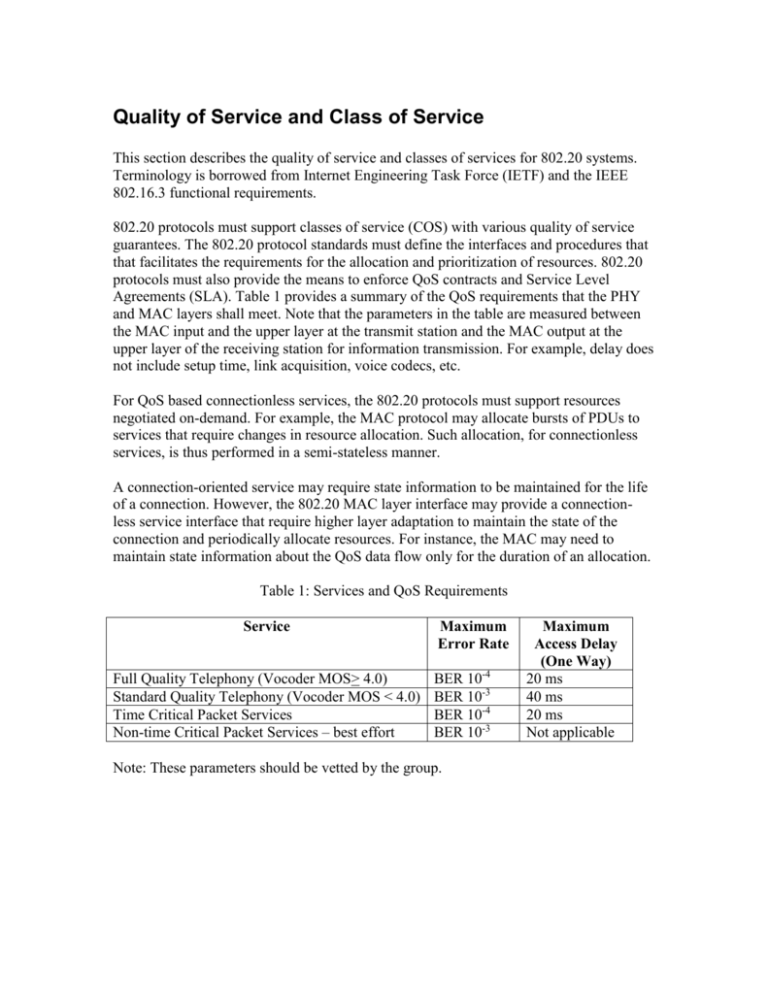
Quality of Service and Class of Service This section describes the quality of service and classes of services for 802.20 systems. Terminology is borrowed from Internet Engineering Task Force (IETF) and the IEEE 802.16.3 functional requirements. 802.20 protocols must support classes of service (COS) with various quality of service guarantees. The 802.20 protocol standards must define the interfaces and procedures that that facilitates the requirements for the allocation and prioritization of resources. 802.20 protocols must also provide the means to enforce QoS contracts and Service Level Agreements (SLA). Table 1 provides a summary of the QoS requirements that the PHY and MAC layers shall meet. Note that the parameters in the table are measured between the MAC input and the upper layer at the transmit station and the MAC output at the upper layer of the receiving station for information transmission. For example, delay does not include setup time, link acquisition, voice codecs, etc. For QoS based connectionless services, the 802.20 protocols must support resources negotiated on-demand. For example, the MAC protocol may allocate bursts of PDUs to services that require changes in resource allocation. Such allocation, for connectionless services, is thus performed in a semi-stateless manner. A connection-oriented service may require state information to be maintained for the life of a connection. However, the 802.20 MAC layer interface may provide a connectionless service interface that require higher layer adaptation to maintain the state of the connection and periodically allocate resources. For instance, the MAC may need to maintain state information about the QoS data flow only for the duration of an allocation. Table 1: Services and QoS Requirements Service Full Quality Telephony (Vocoder MOS> 4.0) Standard Quality Telephony (Vocoder MOS < 4.0) Time Critical Packet Services Non-time Critical Packet Services – best effort Maximum Error Rate BER 10-4 BER 10-3 BER 10-4 BER 10-3 Note: These parameters should be vetted by the group. Maximum Access Delay (One Way) 20 ms 40 ms 20 ms Not applicable Types and Classes of Service The fundamental direction for the QoS model is that will be exported to MBWA endpoints will be IP based and conform to IETF DiffServ QoS model in conjunction with other IP based protocols. The DiffServ QoS model defines traffic for all services as follows: 1. Expedited Forwarding (EF): EF requires a constant periodic access to bandwidth. The bandwidth requirements may vary within a specific range, but delay and delay variance limits are specified. Examples that fall into this category are voiceover-IP (VoIP), videoconferencing, video on demand (VoD) and other multimedia applications. 2. Assured Forwarding (AF): In AF the bandwidth varies within a specified range, but has loose delay and delay variance requirements. Applications, which are limited in their bandwidth usage, may fall in this category. AF services allow the traffic to be divided into different classes. Using this capability, an ISP can offer a tiered services model. For example there could be four classes platinum, gold, silver and bronze with decreasing levels of service quality as well as maximum allocated bandwidth, with platinum getting the highs share of resources and bronze getting lowest. This would facilitate premium priced service level agreements. 3. Best Effort Service (BES): The bandwidth varies within a wide range and is allowed to burst up to the maximum link bandwidth when EF and AF services are not using bandwidth. The bandwidth and delay requirements may or may not be specified. Higher variations of delay may be acceptable since applications that utilize BES allow for a lower grade of service due to preemption by EF and AS traffic. Current Internet service is an example of best effort service. Traffic Shaping For Service Level agreements The 802.20 protocols shall enable the provisioning and signaling of parameters for the guaranteeing of minimum allocated bandwidth used by applications as set by the SLA. This would be accomplished through access throttling, discarding packets and dynamically assigning available bandwidth. The number of service levels, data rates and congestion control parameters will be called out in the 802.20 specifications. Parameters 802.20 protocols shall define a set of parameters that preserve the intent of the QoS parameters for all IP based services supported. Service and QoS Mapping The classes of service and QoS parameters of all services shall be translated into a common set of parameters defined by 802.20. A QoS base IP network may employ the Resource Reservation Protocol (RSVP) to signal the allocation of resources along a routed IP path. If 802.20 is to be a link in the IP network, an IWF must interface with 802.20 to negotiate resource allocation. The basic mechanism available from 802.20 systems for supporting QoS requirements is to allocate bandwidth to various services. 802.20 protocols should include a mechanism that can support dynamically variable bandwidth channels and paths (such as those defined for IP environments).

